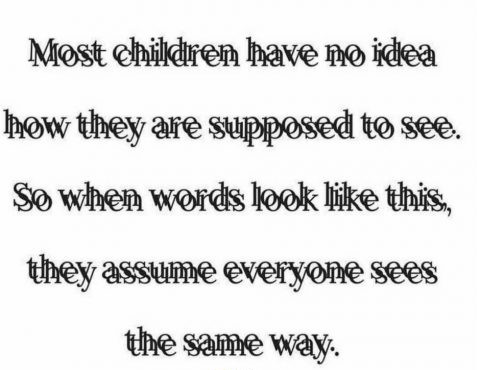Visual Stress, reading difficulties & Dyslexia
At Visual Answers Optometrists, we have over 20 years of experience in helping patients with Visual Stress. This condition is sometimes also called Mearles-Irlen Syndrome, Iren Syndrome or Scotopic Sensitivity Disorder. While these terms are occasionally used, they are not formally recognised medical diagnoses.
The term ‘Visual Dyslexia’ is sometimes used, but this is not accurate. Dyslexia is a language-based Specific Learning Difficulty (SpLD). By contrast, Visual Stress relates to how the visual system processes high-contrast patterns – often described as ‘pattern glare’.
The good news is that some individuals may find relief with coloured overlays or precision-tinted lenses, which can make reading more comfortable. We offer detailed assessments to identify if Visual Stress may be affecting you or your child, and provide tailored advice on the best support options.
Contact Us Now. Call 01509 416800 or Email barrow@visualanswers.co.uk
What is Visual Stress?
Visual Stress most commonly occurs when looking at repetitive, high-contrast text or striped patterns, especially on white backgrounds where the space is similar to lines of printed text. For some people, this can lead to:
- Visual discomfort or eye strain
- Words appearing blurred, moving or distorted
- Difficulty focussing on text
- Headaches when reading
Visual Stress can affect both adults and children. In children, it may go unnoticed because they assume their experience is ‘normal’. This can lead to avoidance of reading, reduced confidence and a decline in classroom performance. Estimates suggest it may affect around 3-5% of children and up to 20% of children with diagnosed Dyslexia.

Does Your Child See Text In This Way?
Dyslexia and Visual Stress Explained – Click The Video.
Dyslexia and visual stress – The difference
Dyslexia and Visual Stress are seperate conditions, but they can sometimes occur together. Dyslexia is a Specific Learning Difficulty (SpLD) with multifacturial origins, involving a combination of genetic, neurobiological and environmental factors.
A major causal factor is thought to be a deficit in phonological awareness (difficulty recognising and manipulating the sounds of language). Differences in how the brains left hemisphere processes sounds and words are often noticed.
By contrast, Visual Stress is a visual processing difficulty that can make text appear unstable or uncomfortable to read. It does not cause Dyslexia, but in some individuals with Dyslexia it may make reading more difficult.
Dyslexia is one of several recognised SpLDs, alongside conditions such as Dyscalculia (difficulty with understanding numbers) and, in some international contexts, Disgraphia (difficulty with handwriting and expression).
A formal diagnosis of Dyslexia or other SpLDs can be made by an Educational Psychologist or a specialist teacher holding an Assessment Practicing Certificate (APC).
Treatment of visual Stress
If Visual Stress is present, management may include:
- Corrective glasses to optimise vision and binocular function
- Coloured overlays for reading.
- Precision tinted lenses, prescribed with an Intuitive Colourimeter, to identify the most effective colour for reducing symptoms
Research suggest these approaches can help some individuals to reduce visual discomfort and improve reading fluency. Reducing visual symptoms can make reading more comfortable and may support wider interventions such as phonics teaching, specialist tutoring or assistive technology. Importantly, Visual Stress can also occur in people without Dyslexia or other SpLDs.
why an eye test matters
The vision screening that some children may receive in school only checks whether a child can see clearly at distance. It is not a full eye exam or assessment of the many visual functions required for healthy eyes and comfortable reading. For this reason, both the College Of Optometrists and British Dyslexia Association recommend that every child has a comprehensive eye examination before starting school.
With the right support, many children can read more comfortably, gain confidence, and perform better in school. Therefore, if your child struggles with reading, complains of words ‘moving on the page’, or shows signs of eye strain, we recommend booking an eye examination and Visual Stress Assessment today.

